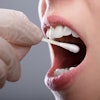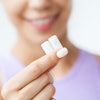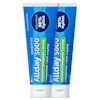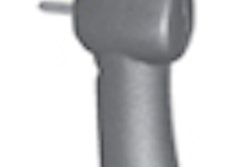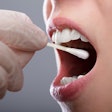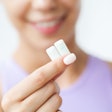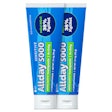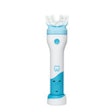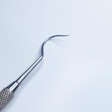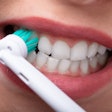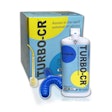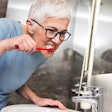Five Rice University students have created a portable dental suction device, an inexpensive, battery-powered version of the vacuum system commonly used in dentists' offices.
Faculty at the University of Texas Dental Branch-Houston (UTDB-H) have long been aware of the need for a portable dental suction device and turned to Rice students to see how they could help, the university noted in a press release.
The goal was clear: The unit had to be portable and low-cost, and run on alternative energy sources where AC power was limited or unavailable. It also had to handle multiple patients on one charge, use various tip sizes, and prevent fluids from flowing back into the patient's mouth.
Bioengineering majors Brian Benjamin, Jaime Wirth, Carmen Perez, and Tiffany Kim and biochemistry and cell biology major Jessica Ma assembled a foot-operated portable system that will go on the road with UTDB-H faculty this summer for testing by rural Texas dentists. They hope the device will eventually become a standard part of Rice's dental Lab-in-a-Backpack developed by Beyond Traditional Borders to deliver care in developing countries.
The team evaluated a number of portable vacuums and finally settled on an 18-volt DeWalt wet/dry unit. They split the battery from the main unit and put a foot switch between the two so dentists could turn it on and off as needed without disrupting their work. The materials for the device cost less than $200.
Extensive testing proved the vacuum would hold up over five hours of heavy-duty use. "We would turn it on, suction 500 milliliters of water, turn it off, and leave it for three minutes -- and then do it again," Wirth said in the release. "With intermittent use, we really don't see power as a problem at all."
The students built in several ways to control backflow, adding a hand-operated valve at the tip, building in L-shaped joints at the top and bottom of the hose, and using tubing that won't kink. And, Ma said, "If you leave the vacuum running for a couple of seconds before you turn it off, that will clear all the liquid out of the applicator tip."
Future refinements will include streamlining the vacuum and adding the ability to charge the battery with solar or mechanical power.
"The students evaluated the need described by their mentors at the dental branch and created a viable solution that is ready to field test," said co-adviser Maria Oden, Ph.D., a professor in the practice of engineering education and director of Rice's Oshman Engineering Design Kitchen, where the device was designed. "The system can run without direct electrical service and should protect patients from swallowing debris during procedures, save dentists time as they perform these procedures, and greatly reduce the amount of waste the team needs to dispose of -- all at low cost."
Copyright © 2010 DrBicuspid.com
